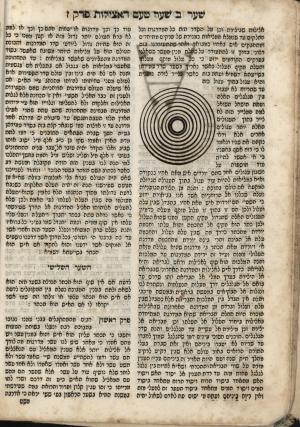Obj. ID: 39128
Jewish printed books Pardes Rimmonim by Moshe ben Ya'akov Cordavero, Lemberg, 1862

This text was prepared by William Gross:
Pardes Rimonim (meaning "Pardes-Orchard of Pomegranates", sometimes known as the Pardes) is a primary text of Kabbalah, composed in 1548 by the Jewish mystic Moses ben Jacob Cordovero in Safed, Galilee. 16th century Safed saw the theoretical systemisation of previous Kabbalistic theosophical views. Pardes Rimonim was the first comprehensive exposition of Medieval Kabbalah, though its rationally influenced scheme was superseded by the subsequent 16th century Safed mythological scheme of Isaac Luria. Cordovera indicates in his introduction that the work is based upon notes he took during his study of the Zohar, the foundational work of the Kabbalah. He notes that he composed the Pardes Rimonim "in order not to become lost and confused in its [the Zohar] depths".
The work is an encyclopedic summary of the Kabbalah, including an effort to "elucidate all the tenets of the Cabala, such as the doctrines of the sefirot, emanation, the divine names, the import and significance of the alphabet, etc." The Pardes Rimonim was one of the most widely read and influential Kabbalistic works. It was a considered a basis of the Kabbalistic outlook until ultimately being rejected in favor of the works of Isaac Luria, one of Cordovera's students. The Pardes Rimmonim is composed of thirteen gates or sections, subdivided into chapters. It was first published at Cracow in 1591. A sample of it was published under the title Asis Rimmonim, by Samuel Gallico; and subsequent commentaries on some parts of it were written by Menahem Azariah da Fano, Mordecai Prszybram, and Isaiah Horowitz. The original work was partly translated into Latin by Bartolocci, by Joseph Ciantes (in De Sanctissima Trinitate Contra Judæos, Rome, 1664), by Athanasius Kircher (Rome, 1652–54), and by Knorr von Rosenroth (in Kabbala Denudata, Sulzbach, 1677).
Cordevero (1522-1570), a disciple of Yosef Caro, was the outstanding Kabbalist of Safed in the Holy Land in the generation before the greatest of the sixteen-century Kabbalists, Yitzhak Luria, who was his pupil. Completed by Cordovero before he was twenty-seven, it organizes the large corpus of Kabbalistic literature comprehensively and systematically.
The world of the Kabbalah, a development of Jewish mysticism, apparently originated in Spain in the 12th century. It was the provenance of a relatively small but highly learned group of scholars in all generations. The advent of printing brought the publication of the Kabbalistic texts as well in the 16th century, some with illustrations which demonstrated Kaballistic theories and ideas. This is the sixth edition of Cordevero's work and uses the illustrations from the 1592 Cracow edition, the first Hebrew book to present the diagram of the ten Sephirot [spheres], a visual presentation of a very basic idea of the Kabbalah. This book is one of the fundamental texts of the Kabbalah by an author considered even today as one of the most important Kabbalistic thinkers.
This edition, many years after the first edition in 1592 Cracow, is printed in the city of Lviv and was one of the torrent of printed works issued from the presses of this city in the 19th century, a major center of Jewish life in Eastern Europe. The books contains copies of some of the Kabbalistic diagrams that were in the original edition.





















